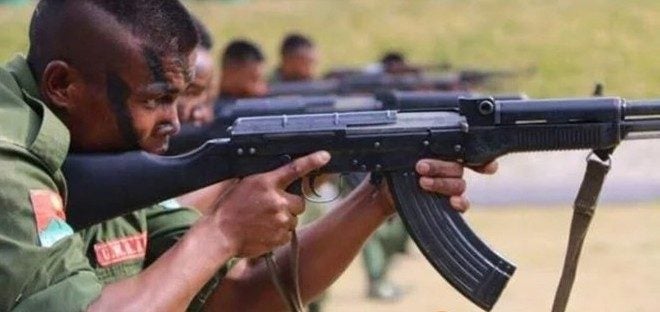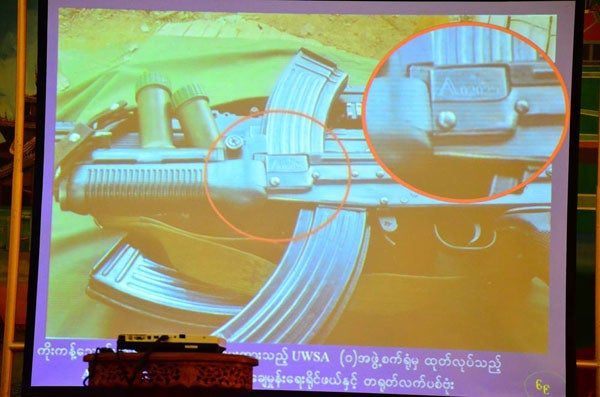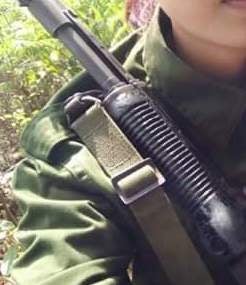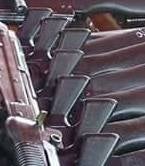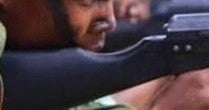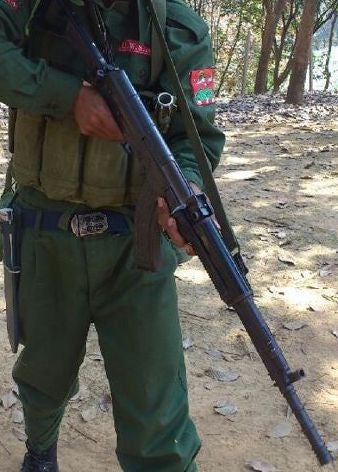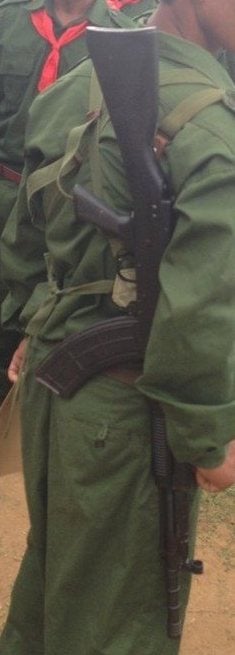Currently boosting a force of over 30,000 fighters, the United Wa State Army (UWSA) has always been a force of reckoning on the Burmese border with China. And although arms production among the Wa (northern Shan State) isn’t a new or hot topic (this Irrawaddy article documenting such production in 2008), there have has been very little written about exactly what is being produced and how to tell it apart. Both the armed factions of the Wa and the Kachin ethnic groups will publicly and proudly claim that their small arms are entirely produced domestically. Although both ethnic armies do have a limited assembly ability and the Kachin appear to manufacture their own mortars, the nexus behind both groups originates from neighbouring China in the form of Type 81 derivatives.
In the case of the Wa, we see this very clearly through the two variants of Type 81s that are assembled in-country. Burmese Tatmadaw spokespersons mentioned at least one location of where these assembly areas are in a press conference in 2015–
The Kokang rebels were using Type 81-8 rifles which are known to be produced by the Wa army. According to the confessions of captured Chinese citizens, the Wa army has been manufacturing weapons in Pangkham (formerly known as Pangsang) in eastern Shan State, and Chinese military officers and citizens have been serving as military advisers and instructors along the border.
Along with a blurry slideshow photograph of some markings. If we were to see the outside cap of the grenades below the rifle, we’d most likely see the phrase “MADE IN WA STATE”, with accompanying Chinese Mandarin and a star in the center.
Although operationally identical to the original Chinese 7.62x39mm Type 81 service rifle, the Wa derivative has a few key identifiers that visually identify it as being of Wa-origin. Apart from the trunnion markings, all are in the furniture of the rifle. First, the furniture (handguard, pistol grip, and stock) are all black polymer in construction. Second, the handguard has finger grooves cut on the lower portion of it. Third, the pistol grip has a very drastic angle to it, making it very similar in appearance to a Stoner-63 inspired one. Fourth, the stock itself has a very distinct “drop” to it between the cheek rest and where it connects to the receiver.
The visual points of identification described appear to be present in the two variants of the Type 81 assembled by the UWSA. The first variant is a very close Type 81 copy, apart from the furniture, almost identical in fact.
However, the second variant differs from the first only in the matter of having a standard Kalashnikov sloped gas block installed in the place of the Type 81’s gas block/front sight combination. In addition it has a front sight post pressed onto the muzzle where a Kalashnikov platform would normally have it.
Another note here is that the Wa appear to be using similarly designed polymer magazines in their Type 81 derivatives that are appearing among the Kachin Kalashnikov rifles we reported on earlier. Of course, Kalashnikov platform magazines and Type 81 magazines are not interchangeable, but the uncanny appearance of the magazine design in both ethnic groups shouldn’t be ignored.
 Your Privacy Choices
Your Privacy Choices